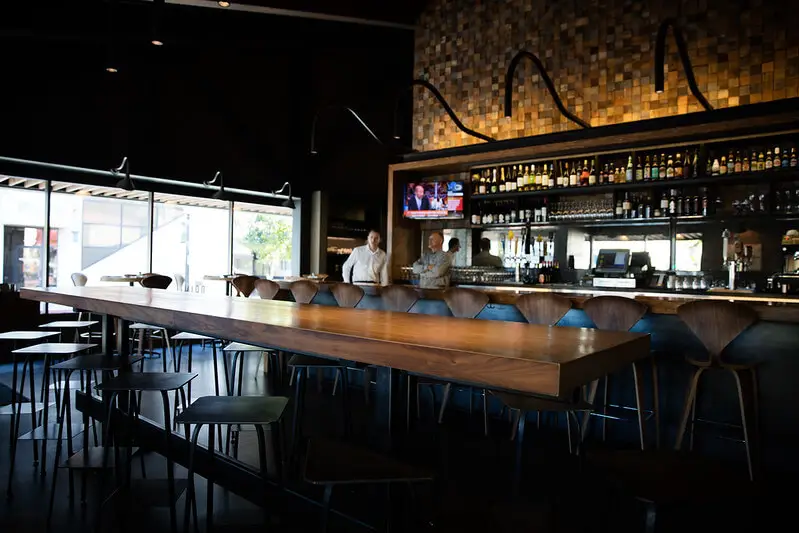Would you want termites burrowing your bar top a few months after its installation? Probably not!
Every outdoor furniture is exposed to elements that can compromise its structural integrity, from fungal bacteria that cause decay to moisture that causes wood to shrink or warp.
So, how do you ensure that your outdoor bar top maintains its structural integrity? The first step is choosing the right wood type for your project.
In this article, we’ll guide you on how to can select the right wood for an outdoor bar top. You’ll also learn about the five types of wood you can use for this project.
How to Choose Wood for an Outdoor Bar Top
Here are a few factors you should consider before deciding which wood to use.
- Local climate: The climatic conditions in your area should dictate what type of wood you’ll use to make your bar top. If you live in a wet area, the chances of your bar top absorbing moisture will be high. Thus, it’s only wise to choose a type of wood that’s water resistant.
- Location of the bar top: Some types of woods can withstand exposure to direct sunlight well. Others are better off placed under a shade. It’s important to determine where you’ll place the bar top and then choose a type of wood that suits that location.
- The durability of wood: The durability of wood can be determined by its resistance to decay, insect attacks, and outdoor weather. Ask yourself, is this wood resistant to fungal decay and insect attacks? Does it retain its stability when exposed to outdoor weather? If yes, then you have the ideal wood for your project.
Let’s look at five types of wood suitable for an outdoor bar top project.
The best woods for bar top
White Oak
| Property | Comment |
| Resistance to outdoor weather | High |
| Resistance to insect infestation | High |
| Resistance to fungal decay | High |
| Finishing | Slightly difficult to finish |
| Workability | Good |
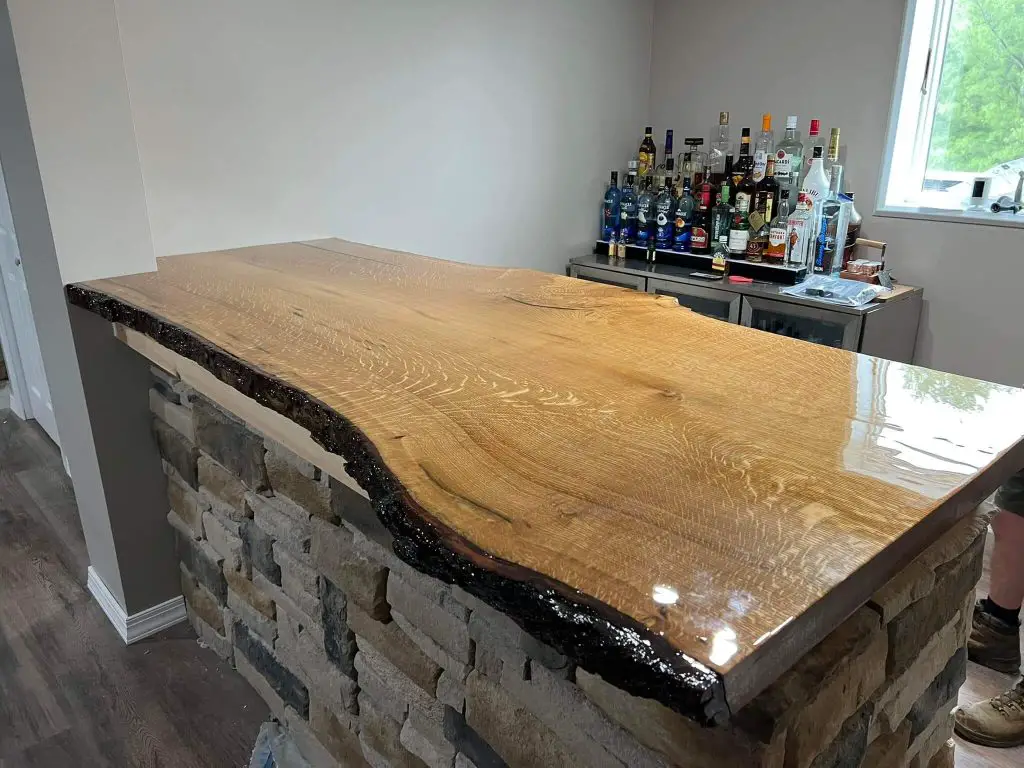
The harder the wood, the more durable it is. Walnut has a Janka rating of 1360 lbf. You can trust this wood to give you a bar top resistant to dents and scratches.

A white oak bar top is very durable. First, the wood has high resistance to outdoor weather. Its pores are covered with a growth known as tyloses. The tyloses protect the wood from moisture, ensuring it doesn’t warp or shrink. They also prevent insects from burrowing through the wood.
It also contains high levels of tannins that make the wood rot-resistant. Tannins make it difficult to finish this wood. The tip is to seal the wood before finishing it.
White oak has good workability with both hand and powered tools. It cuts and shapes easily.
Walnut
| Property | Comment |
| Resistance to outdoor weather | High |
| Resistance to insect infestation | Moderate |
| Resistance to fungal decay | High |
| Finishing | Finishes well |
| Workability | Good |
If you’re looking for a stable wood that will not warp when the humidity in your area changes, then this is it. Walnut is a strong, dense wood with good resistance to shock.
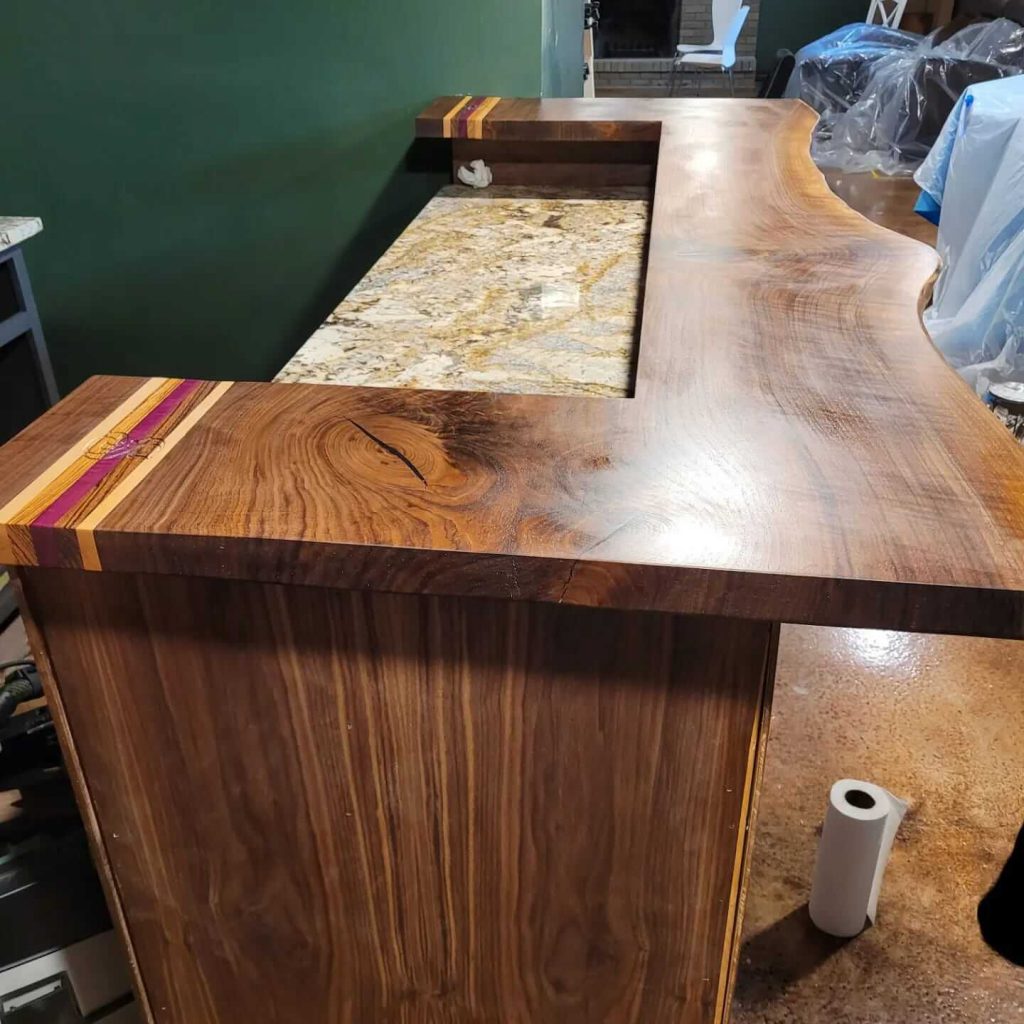
It is very durable, thanks to its high resistance to fungal decay. The wood also has moderate resistance to insect attacks.
The wood’s color ranges from reddish-brown to chocolate-brown. Its grain pattern is straight but sometimes may appear wavy.

Walnut has good workability; it nails and screws well. If you want to get a little creative. You can easily bend walnut into any shape you want.
Walnut tends to fade when exposed to direct sunlight. You may have to place your bar top under a shade. Alternatively, you can stain the bar top before finishing it. This will help the wood retain its natural color.
Mahogany
| Property | Comment |
| Resistance to outdoor weather | High |
| Resistance to insect infestation | High |
| Resistance to fungal decay | High |
| Finishing | Finishes well |
| Workability | Good |
The density of this wood makes it difficult for insects such as termites to destroy it. Mahogany also has excellent weather resistance abilities. It does not shrink or warp even when humidity levels change.
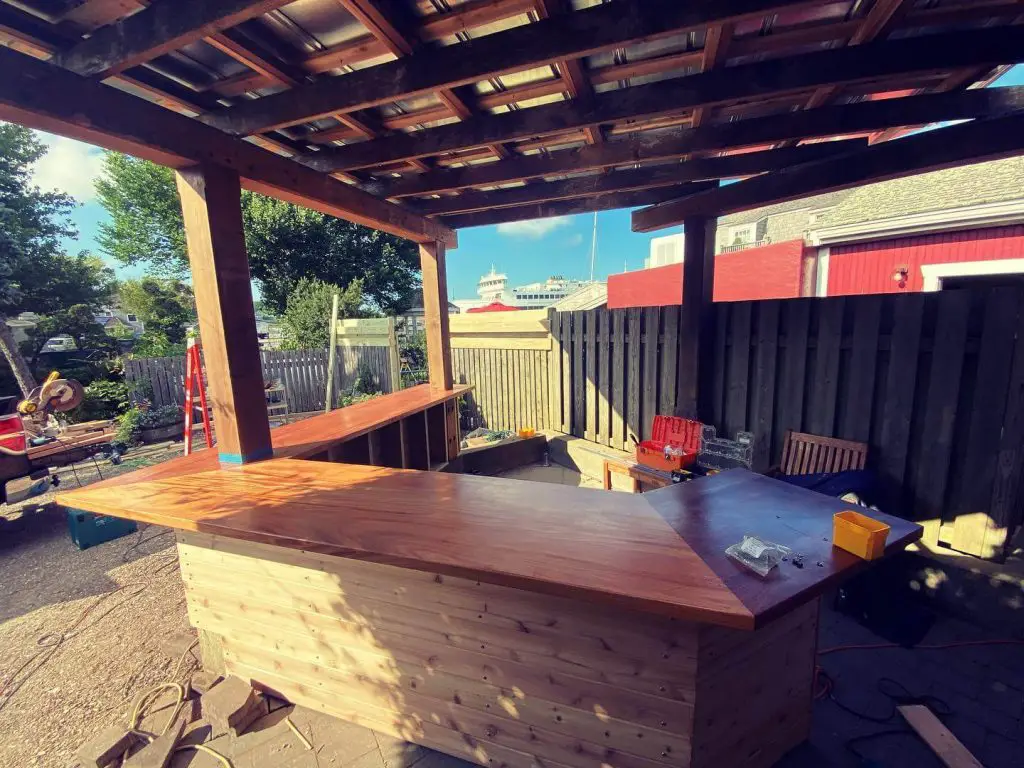
Mahogany bar tops are aesthetically pleasing, thanks to the wood’s rich natural color. Sometimes, its grain appears wavy or curly. The grain pattern makes the wood even more attractive.
This wood has good workability. It nails, screws, and finishes very well.
Cedar
| Property | Comment |
| Resistance to outdoor weather | High |
| Resistance to insect infestation | High |
| Resistance to fungal decay | High |
| Finishing | Finishes well |
| Workability | Good |
Cedar is softwood with all the properties you need for outdoor furniture. It contains natural oils that make it highly resistant to outdoor weather. The oils also protect it from fungal decay and insect infestation.
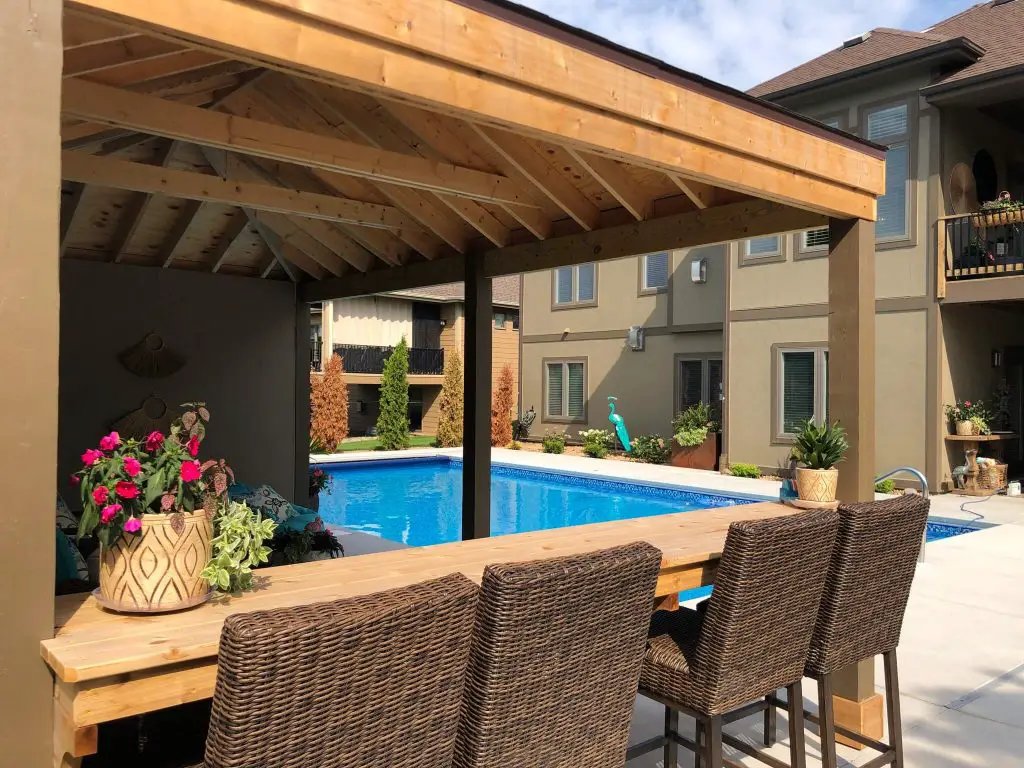
Cedar wood has great workability with both hand and powered tools. It cuts, nails, and screws nicely. The wood also finishes well with both paint and stain.
This wood’s natural resistance to outdoor elements makes it even more desirable. You don’t have to worry about having a hectic maintenance routine.
Chestnut
| Property | Comment |
| Resistance to outdoor weather | High |
| Resistance to insect infestation | Low |
| Resistance to fungal decay | High |
| Finishing | Finishes well |
| Workability | Good |
Chestnut might not be as hard as oak or walnut. But it can give you a beautiful and strong bar top. This wood has a straight grain that sometimes appears interlocked. Its color ranges from light to medium brown.
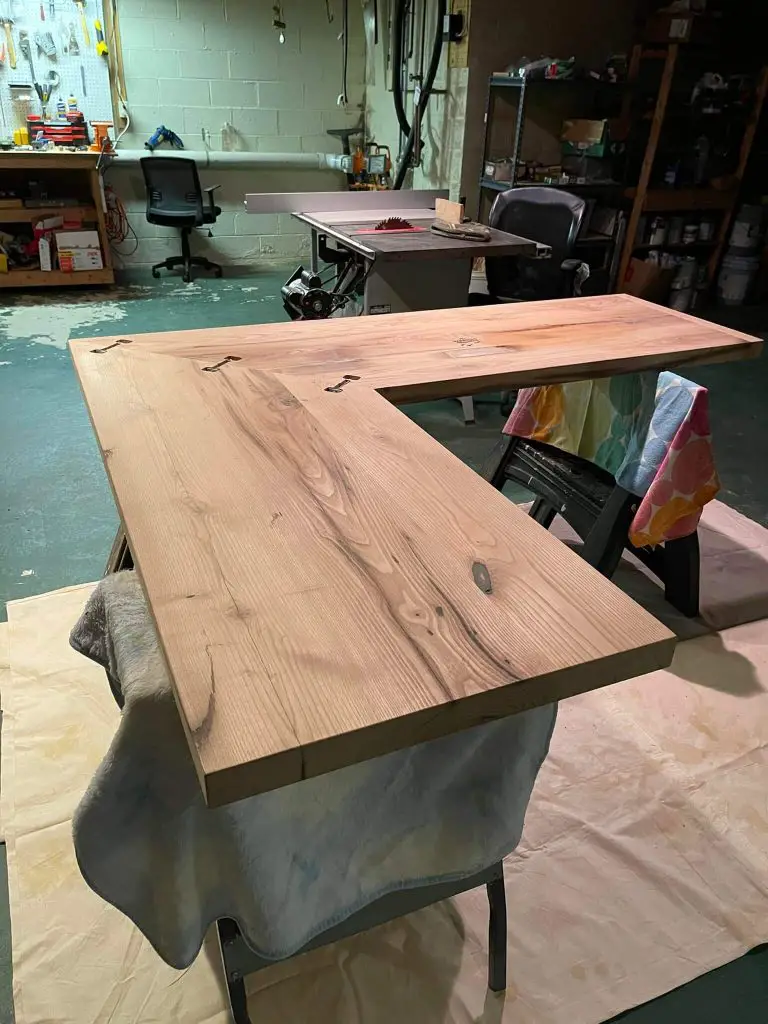
Chestnut contains tannic acid that helps the wood to withstand outdoor elements. It has a high resistance to decay too. This wood is more susceptible to insect attacks and may require extra maintenance.
With a Janka rating of 540 lbf, chestnut is softer than most hardwoods. It’s therefore very easy to work with. The wood also stains and finishes well.
Best woods for bar top: Conclusion
Choosing the right wood is the first and most critical step in constructing an outdoor bar top. The right wood will resist fungal decay, insect attacks, and outdoor elements. Here are some of the woods you can use to make a strong, durable outdoor bar top;
- White oak
- Walnut
- Mahogany
- Cedar
- Chestnut

